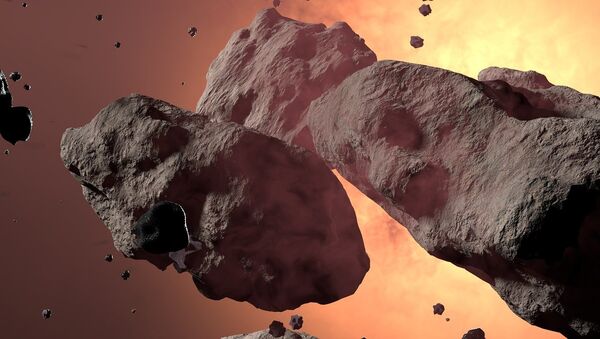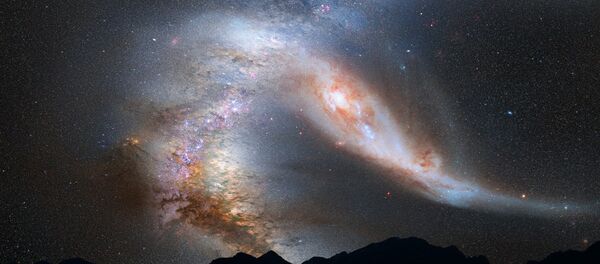A 3-kilometer-wide asteroid with a nearly identical orbit to Jupiter has served up one mystery after another for astronomers. When it was discovered in November 2014 using Pan-STARRS (Panoramic Survey Telescope and Rapid Response System) at the Haleakala Observatory in Hawaii, asteroid 2015 BZ509 was found to have a very rare quality: it orbits clockwise around the sun — the opposite direction of the planets and other asteroids.
Stellar objects with retrograde orbits are typically captured objects that didn't form with their parent planet or star, but wanderers from distant regions who were eventually dragged into new orbital patterns by the more powerful gravity of a large celestial body. Neptune's moon Triton and Saturn's moon Phoebe have retrograde orbits, as does Halley's Comet, according to The New Scientist.
"How the asteroid came to move in this way while sharing Jupiter's orbit has until now been a mystery," said astronomer Fathi Namouni of the Côte d'Azur Observatory in France in a statement.
De kleine planetoïde 2015 BZ509 onderhoudt een innige relatie met Jupiter. Hij beweegt in vrijwel dezelfde tijd om de zon, maar dan wel precies de andere kant op. Dat wijst erop dat het object van buiten het zonnestelsel komt. https://t.co/iqtEA07LFh pic.twitter.com/nKSC9TjNve
— NRC (@nrc) May 22, 2018
Namouni is one of the authors of a new study published Monday in Monthly Notices of the Royal Astronomical Society, The Scientific American reported. Namouni and co-author Helena Morais of São Paulo State University in Brazil set out to answer the question as to how and why this asteroid arrived in its present situation.
"If 2015 BZ509 were a native of our system, it should have had the same original direction as all of the other planets and asteroids, inherited from the cloud of gas and dust that formed them," Namouni said. So, BZ509's origins required an explanation.
The scientists determined that given the asteroid's age and orbit, there was no other possibility: it had to have come from another star system.
"We showed that 2015 BZ509 has been a retrograde co-orbital of Jupiter over the age of the solar system, i.e., since 4.5 billion years ago," Morais told Space.com. "The solar system could not produce retrograde orbits so far back in time, so the only option left is that of capture from another system."
"We did not expect that the asteroid would remain bound to Jupiter and that it would hang on in there for 4.5 billion years, but it did!" Namouni continued in the statement. "Since the asteroid's orbit was right there as it is now — in retrograde and in the same resonance with Jupiter — it can't have been born in the solar system."
BZ509 isn't the first object of interstellar origin discovered by scientists: last fall, the bizarre asteroid Oumuamua was spotted passing through our solar system, sparking a flurry of scientific inquiry — and conspiracy theories about it actually being a spaceship. But Oumuamua just turned out to be a really weird rock, albeit of great value to scientists.
However, there are few similarities between the two objects. There is a "practically zero" chance they came from the same star system, Namouni said, Newser reports. Also, Oumuamua was just passing through, whereas BZ-509 isn't simply a tourist, it's become a permanent resident.



